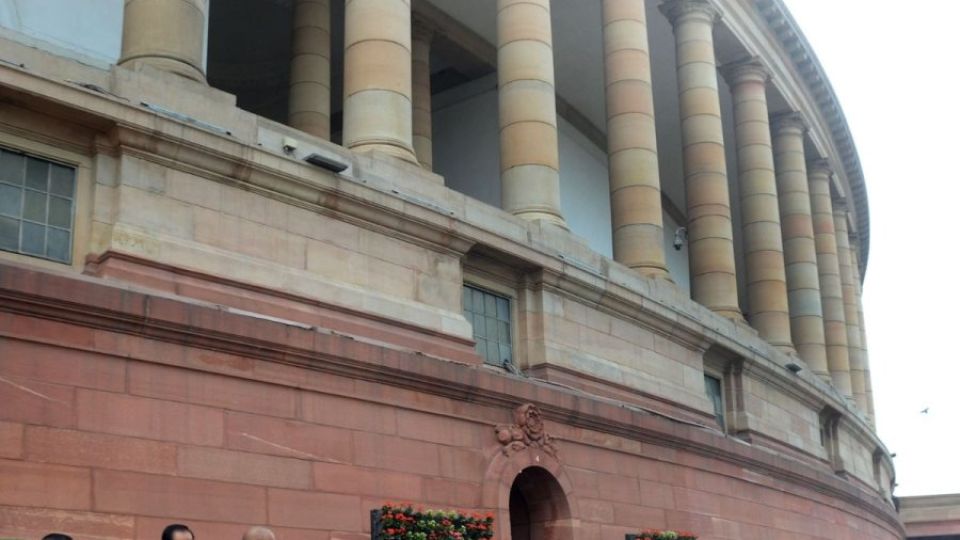February 1, 2023
NEW DELHI – India will witness a “robust” GDP growth of 6.0 per cent to 6.8 per cent in 2023-24, depending on the trajectory of economic and political developments globally, the Economic Survey for 2022-23 tabled in Parliament by Finance Minister Nirmala Sitharaman said today.
In comparison, the economy is expected to close the current financial year 2022-23 (FY23) with a growth rate of seven per cent in real terms. The growth rate was 8.7 per cent in the previous financial year, 2021-22. The economy’s current recovery is mainly attributed to rising domestic demand and a revival in investment.
Despite a downward revision, the growth estimate for FY23 is higher than for almost all major economies and even slightly above the average growth of the Indian economy in the decade before the pandemic. Agencies worldwide have recognised India as the fastest-growing major economy at 6.5-7.0 per cent growth rate in the financial year ending 31 March, 2023.
The economy was able to withstand the three shocks of Covid-19, Russian-Ukraine conflict and rate hikes by Central Banks across economies, led by Federal Reserve, to curb inflation, leading to appreciation of US Dollar and widening Current Account Deficits (CAD) in net importing economies.
According to the Survey, fiscal deficit is expected to be at 6.4 per cent of GDP in FY23. The resilience in the fiscal performance was due to a recovery in economic activity and buoyancy in revenues. The Wholesale Price Index (WPI) has been sliding from its peak of 16.6 per cent in May 2022 to 10.6 per cent in September 2022 and further to 5.0 per cent in December 2022.
The Consumer Price Inflation, affected by shortfalls in crop harvests, went through three phases in 2022. A rising phase up to April 2022 when it crested at 7.8 per cent, then a holding pattern at around 7.0 per cent up to August 2022 and then a decline to around 5.7 per cent by December 2022, the Survey has revealed.
Dwelling on the Outlook for 2023-24, the Survey says, “India’s recovery from the pandemic was relatively quick, and growth in the upcoming year will be supported by solid domestic demand and a pickup in capital investment.”
The Survey said that “aided by healthy financials, incipient signs of a new private sector capital formation cycle are visible and more importantly, compensating for the private sector’s caution in capital expenditure, the government raised capital expenditure substantially”.
Private consumption and capital formation during 2022-23 helped generate employment as seen in the declining urban unemployment rate and in the faster net registration in Employee Provident Fund, the Survey said.
Moreover, the world’s second-largest vaccination drive involving more than two billion doses also served to lift consumer sentiments that may prolong the rebound in consumption. Still, private capex soon needs to take up the leadership role to put job creation on a fast track.
The Survey said the optimistic outlook for growth arises from the limited health and economic fallout for the rest of the world from the current surge in Covid-19 infections in China and, therefore, continued normalisation of supply chains.
There were also recessionary tendencies in major Advanced Economies (AEs) triggering a cessation of monetary tightening and a return of capital flows to India amidst a stable domestic inflation rate below six per cent, providing impetus to private sector investment.
The Survey says credit growth to the Micro, Small, and Medium Enterprises (MSME) sector has been remarkably high, at over 30.6 per cent, on average during Jan-Nov 2022, supported by the extended Emergency Credit Linked Guarantee Scheme (ECLGS) of the Union government.The recovery of the MSMEs is evident in the amounts of Goods and Services Tax (GST) they pay, while the ECGLS is easing their debt servicing concerns.
The optimistic growth forecasts stem from a number of positives like the rebound of private consumption given a boost to production activity, higher Capital Expenditure (Capex), near-universal vaccination coverage enabling people to spend on contact-based services, such as restaurants, hotels, shopping malls, and cinemas.
There has been return of migrant workers to cities to work in construction sites leading to a significant decline in housing market inventory, the strengthening of the balance sheets of the Corporates, a well-capitalised public sector banks ready to increase the credit supply and the credit growth to the MSME sector.
The Survey said the “release of pent-up demand” was reflected in the housing market too as demand for housing loans picked up. Consequently, housing inventories have declined, prices are firming up, and construction of new dwellings is picking up pace.
The universalisation of vaccination coverage had a significant role in lifting the housing market as, in its absence, the migrant workforce could not have returned to construct new dwellings.
The Economic Survey says further support to economic growth will come from the expansion of public digital platforms and path-breaking measures such as PM GatiShakti, the National Logistics Policy, and the Production-Linked Incentive schemes to boost manufacturing output.
The Mahatma Gandhi National Rural Employment Guarantee Scheme (MGNREGS) has been providing jobs in rural areas and indirectly creating opportunities for rural households to diversify their sources of income generation, the Survey said.
The Capital Expenditure (Capex) of the central government, which increased by 63.4 per cent in the first eight months of FY23, was another growth driver of the Indian economy in the current financial year, the Survey said. It, however, cautions that the challenge of the depreciating rupee, although better performing than most other currencies, persists with the likelihood of further increases in policy rates by the US Fed.


